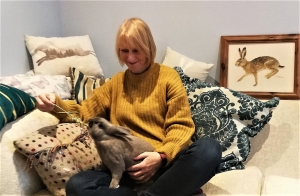On owning an eco pet by John Thompson (first published in West Sussex County Times)

As the time of seasonal exchange of presents approaches, many people may be considering gifting an animal.
The number of dogs and cats in the UK has shot up to 12 million of each. They undoubtedly make great pets and bring enormous pleasure but these large numbers bring difficulties as well as delights. The UK is now one of the most nature depleted countries in the world, as anyone over 50 will attest. From rockpools and meadows brimming with life we are now thrilled by a single butterfly.
According to the RSPB, UK cats catch around 100 million prey items every year. I’ve lost count of the number of nests raided by cats in my own small garden. Nestlings are particularly vulnerable as they can’t escape a cat, even one with a bell round its neck. Similarly, ground nesting birds’ nests are innocently destroyed every spring by dogs off leads.
So what can be done?
In Australia in 2015 cats were reported killing 75 million native animals per DAY so many towns now have cat curfews, outside of which stray cats can be shot. I’m not suggesting anything this extreme, but I wonder if cats in the UK could be sold with a “conservation rating”, similar to an energy rating on a washing machine? The rag doll breed, for example, has little killer instinct and doesn’t roam far. Many cat owners are horrified at the destruction their cats inflict and pet shops could inform customers of the cat’s likely potential to kill. Animals sold with a conservation rating could help customers choose the right one – similar to the way we might choose allergy-free dogs!
When dog legislation restricting dangerous breeds and managing fouling was introduced it brought a wonderful new culture of responsibility by dog owners.
It’s high time we also updated our culture of cat ownership.
Although cats doubtless make great pets, less commonly chosen species can be intriguing. As a tortoise breeder, I get immense satisfaction as I watch my tiny hatchlings make their way into the world over a few days each summer; my fish tank brings colour and harmony to my home; and my tiny garden is visited regularly by hedgehogs, frogs, bats and squirrels.
And a quiet rabbit with its warm fur and peaceful nature can be a perfect house pet – no need for walking, no killer instinct, no stinky poos, vegetarian, outdoors in the summer…
Let’s think ahead when considering which animals we’ll be supporting. Consider the wider, wilder, more long-term impact, and let’s make choices that the next generations will thank us for.

Written by John Thompson


